
Wolfdog Cross
(also known as Wolfdog Hybrids)

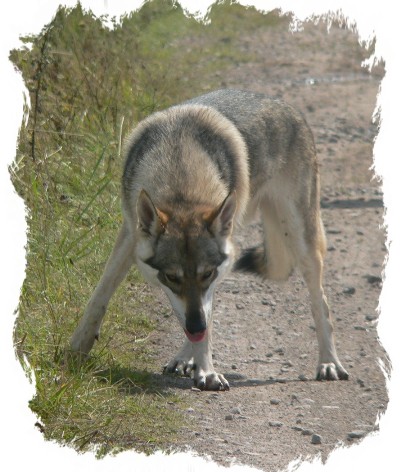
"Leyla" - female - CSV x NI Hybrid
Pictures reproduced with the kind permission
of Averil Roden -
Nashoba Wolfdog Hybrids
General Appearance Characteristics Temperament Head and Skull Eyes Ears Mouth Neck Forequarters Body Hindquarters Feet Tail Gait/Movement Coat Colour Size Faults Note |

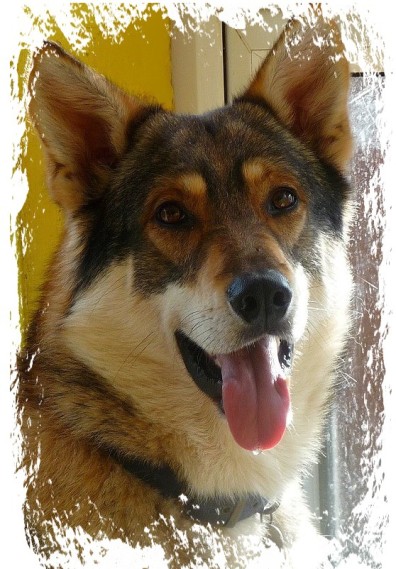 "Drummer" Saarloos Wolfhund x Northern Inuit hybrid
|
|
Sansorrella Lady in Red - Saarloos x NI hybrid |
The cross litters that I bred here in 2009 were only 25% Saarloos wolfhund and this tended to calm down the OTT exhuberance of the Northern Inuit dog, but it has also made them slightly more reserved and shy with strangers. In my experience, the higher the Saarloos wolfhund content, the more reserved and timid the dogs are. This is not really what is required of a family pet. I would only recommend the lower percentage dogs as domestic pets, 25% or less. Higher percentage wolfdog crosses (50% - 75%) may be used in breeding, providing that the resulting pups available to the general public are lower percentage wolfdogs.
|
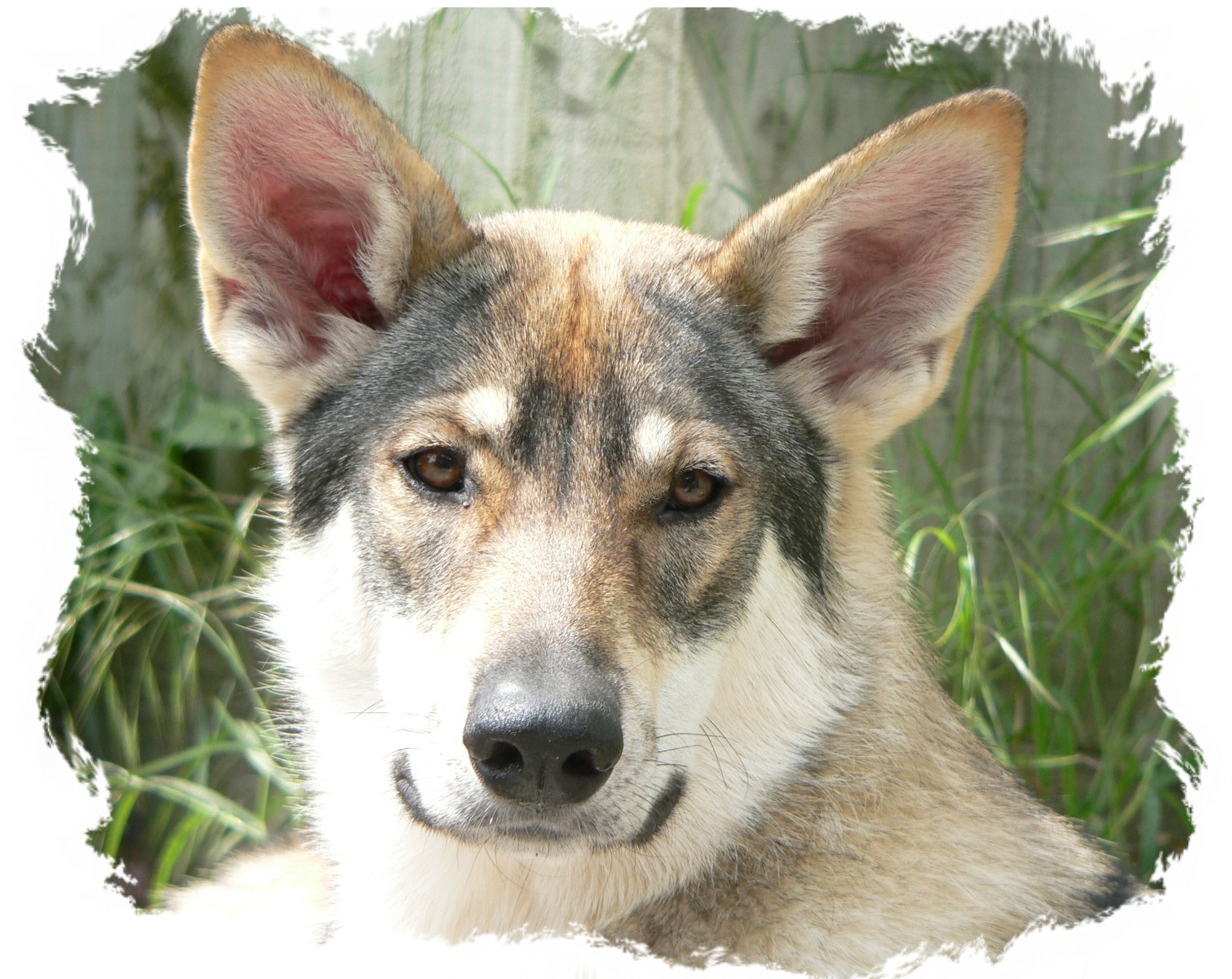 "Taloowa" CSV x NI hybrid |
|
|

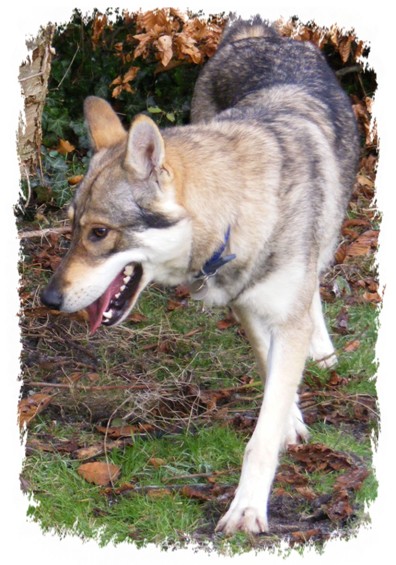 |
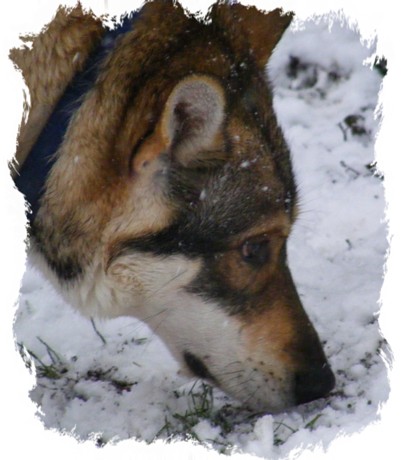 |
It is my belief that the future of the 'wolf
look-alike' type dog lies in expanding the gene pool. One obvious
way to do this, without losing the wolfish appearance, is to include
genes from the
established Saarloos wolfdog and Czechoslovakian wolfdog. These breeds have already been crossed successfully with 'Northern and British Inuit' dogs, resulting in a healthier and more robust wolf-lookalike. 2009 saw the result of the addition of these hybrid genes to my Sansorrella 'Northern Inuit' dogs - creating a healthy, loyal, trainable, companion wolfdog that is a joy to own. These and future litters will be registered with the Anglo Wulfdog registry. The offspring from these matings may, in the future, be put back to good, health tested Northern Inuit, Malamute, Husky, Tamaskan or GSD studs, with the hybrid genes being included intermittently to maintain the health and vigour without losing the character of this type of dog. The wolfdog content will therefore remain fairly low on most of my litters. Even so, they will not be a dog for the novice owner. The aim is to ultimately produce a Tundra wolf appearance with a biddable temperament. NB 'wolfdog hybrid' in this context refers to an existing wolfdog breed being crossed with another breed - in this case Northern Inuit dog. This is NOT a wolf hybrid or wolfdog hybrid as described by Wikipedia. Any Czechoslovakian Wolfdog bitches owned by Sansorrella may be crossed in order to produce a suitable 'Wolf Lookalike' stud that can be used in the Anglo Wulfdog breeding programme. This does not take anything away from the Csv and she could still be bred purely to a Csv stud in the future. |
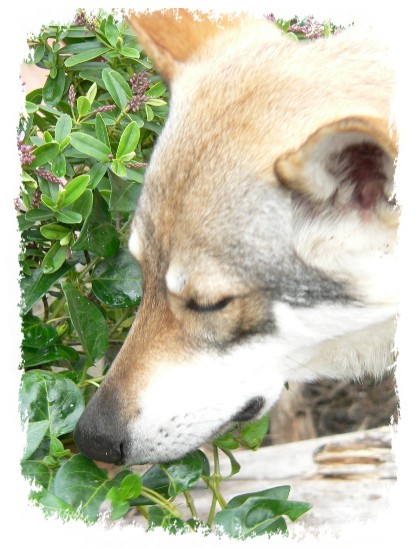 |
"Drummer" Saarloos x NI with "Quest" CSV pup
"A girl is a person who screams at the mouse and smiles at the wolf"

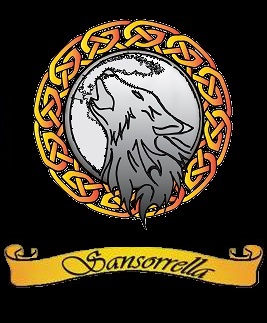
![]() Sansorrella 2010 All rights reserved
Sansorrella 2010 All rights reserved